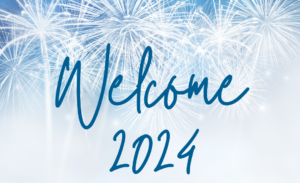My colleague Kirsten Jordan and I hosted a pre-Halloween webinar yesterday for Shadowmatch, a company that positively impacts individuals and teams to accelerate business performance by identifying and predicting specific habits and behaviors responsible for success.
On the webinar, Kirsten and I talked about techniques for building relationships to help carry your work and ideas forward. You can listen to the recording here.
 Success is difficult to achieve when you are working in a silo. In most organizations, people are dependent upon the cooperation, commitment and support of others to achieve their goals. Getting commitment is difficult enough from the people who work for you, so how can you get commitment from someone you work for or work with?
Success is difficult to achieve when you are working in a silo. In most organizations, people are dependent upon the cooperation, commitment and support of others to achieve their goals. Getting commitment is difficult enough from the people who work for you, so how can you get commitment from someone you work for or work with?
The best way to start is by focusing on the relationship first, and the work second.
Allan R. Cohen and David L. Bradford have a good model for developing relationships in their book Influencing Without Authority, which was also the title for our webinar (although we altered it to something more Halloween related: Transition Tactical Ghouls into Strategic Superheroes).
The tools Cohen and Bradford provide in their book that I find particularly helpful in building long-term relationships at work are the concept of “currencies” – which is a term for what a person values – and the relationship assessment, used to diagnose an existing relationship and identify ways to strengthen it.
What is a person’s currency? What do they value, and more importantly, what can you give to them that falls within their value system?
Click on the picture to the right for examples of common currencies valued in organizations.

Two of my favorites – both to give and to get – are visibility and recognition.
- People value visibility when they want their skills, capabilities and talents to be noticed and utilized. Visibility improves their chances of being asked to work on cool and important projects in the future, while expanding their network of relationships within the company.
- Who doesn’t value recognition? I honestly don’t know anyone who doesn’t want to be thanked and appreciated for their work and performance. Different people may prefer different types of recognition.
How strong are your relationships? What actions can you take to strengthen them?
Click on the picture at the right for the Cohen and Bradford Relationship Assessment questions.  I like these questions because they force me to think from different perspectives about a relationship. Assessing a relationship well requires honesty and a broad perspective:
I like these questions because they force me to think from different perspectives about a relationship. Assessing a relationship well requires honesty and a broad perspective:
- Look really hard at perceptions about the other person that you bring to the relationship, and be brutally honest with yourself about assumptions you are working under, because sometimes these can be self-fulfilling. If you assume the guy from Finance doesn’t “get” your project, and then never give him a thorough, straightforward answer to his questions about the project, he’s probably not going to “get it” the way you want him to.
- How well do you understand the other person’s world? Developing empathy for the person with whom you want or need to build a relationship requires understanding of the organizational forces at play in their division/department/team. What kind of pressures are they under? How are they compensated, recognized, rewarded? What would success look like to them? What is in it for them? You might be able to ask them directly about some of these areas, but if you can’t, find others who can help you understand.
Thank you, Shadowmatch, for inviting Kirsten and me to your webinar series. And thank you to a fabulous audience for good interaction and great questions.
Candy corn for everyone!
Heather Nelson is a partner with PeopleResults. Her favorite Halloween treats are Heath Bars and Almond Joys. You can reach her at hnelson@www.people-results.com or on Twitter at @HeatherGNelson1. Sign up to receive the PeopleResults blog at Current.



